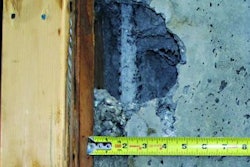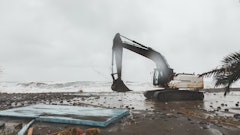When I worked in the Obama White House, one of my most important assignments was to help oversee implementation of the American Recovery and Reinvestment Act, commonly known as the stimulus. The measure met its major objectives, hitting spending targets on time, keeping down waste and fraud, and surpassing the goal of saving or creating three million jobs. Yet it never won favour with the public.
In defending it, the most common question I heard was something like: "Why didn't you guys just do what FDR did, and build another Hoover Dam?"
Even my administration colleagues sometimes expressed Hoover Dam nostalgia as they grew disappointed that the act's signature initiatives such as solar and wind power, high-speed rail, a smarter power grid and electric car battery plants failed to rally the public. No one cares about the small projects, I was often told. So why wasn't the answer to start another mega-project like the Hoover Dam? And why isn't it the right policy now, with the unemployment rate so stubbornly high?
First, it's important to understand how small a role giant construction projects played in ending the Great Depression. Millions of Americans were employed by the Works Progress Administration and the Civilian Conservation Corps on scores of projects, including reclaiming land, constructing federal buildings, planting windbreak trees, erecting park lodges and paving park roads. The spectacular mega-endeavours that we now associate with the New Deal were actually a small part of the overall program.
The Hoover Dam, the granddaddy of them all, provided jobs for only 5,200 people at its peak employment level. The Tennessee Valley Authority's signature Wheeler and Norris dams employed even fewer people, about 4,000 each.
That may sound like a lot, but given that the U.S. lost 1.5 million jobs in the two months before Barack Obama became president, any such project would barely have made a dent. To employ just the people who lost jobs in those two months - and not the millions more who lost them before or after - we would have had to build 300 Hoover Dam-sized projects.
Which brings us to the next point: Who wants that? Yes, the U.S. has a dramatic need to update its infrastructure, with some estimates putting the cost at $2 trillion.
Yet the vast majority of these needs are repairs and improvements to existing roads, bridges, dams and rails - the kind of projects that we did finance with Recovery Act funds - each of which creates a relatively small number of jobs, and none of which are head-turning landmark enterprises.
The very first Recovery Act undertaking was a bridge spanning the Osage River in Missouri, to replace a New Deal era structure from 1933. Desperately needed, the project was a success: finished under budget, ahead of schedule and meeting a serious need. Laudable in every respect, it directly employed 18 workers at its peak.
Yes, infrastructure projects create jobs. But even by the administration's own estimate, the number of jobs created or saved by $25 billion in Recovery Act spending on roads was a mere 150,000 over a two-year period. That isn't a trivial number, but it's hardly a game changer for an economy that needs to create five million jobs each year just to keep the unemployment rate constant.
The U.S. needs jobs, and better bridges, roads and dams. But it's time to let go of the idea that a handful of marquee construction projects can solve our employment problem.



















